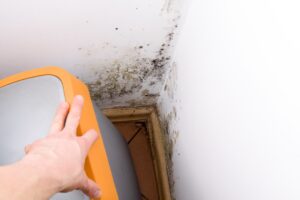Mold and mildew are two types of fungi commonly found around the home. Though they may appear similar, it is important to note the differences between the two so you know how to treat and eliminate them.
What Is the Difference Between Mold and Mildew?
Mold is a type of fungus that penetrates the surface of a material in green or black patches. It usually grows inside walls and crawl spaces, or on food. Mildew, on the other hand, can be specified as a subtype of mold. It does not penetrate the material on which it grows but rather stays on its surface. You can find it on paper, organic materials, fabrics, and on damp surfaces around the home.
What Are the Most Common Types of Mold and Mildew?
The most common types of mildew are powdery and downy mildew. The former grows on flowers, while the latter is more commonly found in potatoes and grapes. Though there are many types of mold, the ones most commonly seen in homes belong to these five types: Alternaria, Aspergillus, Cladosporium, Penicillium, and Stachybotrys Chartarum. They differ in color, place of growth, and the amount of danger they pose to your home.
Differences Between Mold and Mildew
Appearance
Mold usually looks slimy or fuzzy. If you see random irregularly shaped spots on your walls or other solid surfaces, it is safe to assume that it is mold. The spots are either blue, brown, yellow, green, or black. Mildew is usually either fluffy or powdery, and it grows in a flat pattern. If you see a damp area covered with a yellowish, black, or white patch, it is definitely covered with mildew.
Effects
Mold can be quite dangerous if left untreated for a long time. It can cause allergic reactions, migraines, heart and respiratory problems, dizziness, depression, and fatigue. Its effects are most dangerous for kids and people with weak immune systems. Mildew, on the other hand, mostly affects plants and crops. If it does form indoors, it can cause coughing, sore throats, respiratory problems, as well as mild headaches.
How to Get Rid of Mold and Mildew
Mildew is easy to remove. Spray it with cleaner, and scrub it with a brush. Make sure you wear gloves and a protective mask so you don’t irritate your skin or inhale any fumes from the cleaner. Conversely, it is not that easy to get rid of mold. It spreads quickly and penetrates the surface of affected materials, so it can cause structural damage. It is also hard to see it unless you spot it immediately, as it is forming. So, DIY remedies are rarely effective.
Call Mold Solutions
Luckily, there is a solution for mold as well. If you want to get rid of it for good, contact Mold Solutions. We will remove it in a timely fashion and ensure that you never have to deal with mold again!








